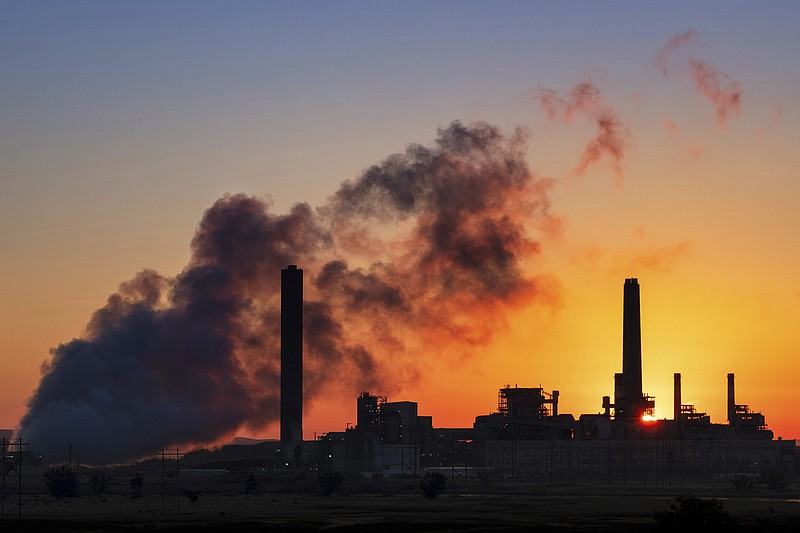Accelerated climate change is amply documented in thousands of scientific studies from around the world. Consequences of change range from expanding areas of drought, which lead to widespread crop failures and forest fires, forced migrations of people due to shortages of food and water, more intense oceanic storms, rising sea levels, and destruction of ocean-based food chains.
Increasing concentration of greenhouse gases is the fundamental cause.
In the mid-19th century, John Tyndall, an Irish physicist, demonstrated that certain gases, including carbon dioxide, methane and water vapor trapped heat. He concluded that these gases helped to regulate the Earth's temperature by blocking the loss of heat that would otherwise be lost. Work by a succession of international scientists linked rising, global temperatures to increases in carbon dioxide concentrations in the atmosphere.
In 1958, Charles Keeling, an American scientist based at California's Scripps Institute, initiated continuous monitoring of atmospheric carbon dioxide, also known as CO2, from a station which he established atop Mauna Loa, an extinct volcano in Hawaii. "Keeling curves" demonstrated the link between steadily rising levels of CO2, most of which he attributed to the burning of fossil fuels, and rising, global temperatures. Keeling was the first climate scientist to alert the public to the risk of global warming. Stations in Antarctica and other sites confirm these measurements.
Before industrialization, atmospheric CO2 levels hovered for thousands of years around 280 parts per million. The concentration reached 317 ppm in 1960 and 415 earlier this year.
Compared to CO2, methane is 20 times more potent in trapping heat. Atmospheric levels of methane have risen sharply since 2000. Methane leaks into the air when natural gas, coal, and oil are extracted from the Earth. In late August the Trump administration relaxed regulations that required producers of natural gas and oil to monitor and correct leaks of methane from production, transport and storage sites. The administration questions the authority of the Environmental Protection Agency to label methane as an atmospheric pollutant.
Other sources of methane are manure-lagoons at factory farms, wetlands, rice paddies, and garbage dumps, all sites where methane-producing bacteria thrive.
Vast quantities of CO2 and methane are stored beneath permafrost, the thick layer of soil in northern latitudes that remains permanently frozen. Rising temperatures are accelerating the thawing of permafrost, releasing the stored gases beneath. This could drastically raise atmospheric concentration of methane.
In 2018, the Trump Administration canceled funds for NASA's Carbon Monitoring System, which employs satellites to collect data on global CO2 and methane levels. You cannot regulate what you cannot measure.
The atmospheric concentration of nitrous oxide, abbreviated as NO, is a third important greenhouse gas. It also is rapidly increasing. NO is released from waste-water treatment plants, agriculture, and industrial processes.
And finally, rising temperatures influence the atmospheric concentration of water vapor, a fourth important greenhouse gas.
Recognizing the global risk of rising temperatures, the United Nations in 2015 drafted and ratified the Paris Agreement, the first comprehensive plan to address global climate change. To date, 195 nations have signed the accord, which aims to limit global warming to no more than 1.8° Fahrenheit above pre-industrial levels. Rather than mandating a uniform set of guidelines, the accord gives each nation the responsibility to craft its own path to achieve, in the short term, a 20% reduction in greenhouse gas emissions, a 20% improvement in energy efficiency and a 20% increase in alternative energy. A longer term goal is a 50% reduction in CO2 emissions by 2030 and their elimination by 2050.
In July 2017, Trump withdrew the U.S. from the agreement, effective November 2020.
Trump's EPA directors issued anti-environment directives, rolled back standards and regulations and forbade agency scientists from mentioning global warming in public appearances. Scientific papers related to climate change were blocked from publication. Career scientists were transferred from research to administrative positions. Advisory panels were filled with representatives from energy-related industries.
The Trump administration is either ignorant of the science underlying global warming or, as seems more likely, chooses to promote the interests of fossil fuel industries over the health of people worldwide.
My health will not be dramatically affected by global warming. The health and well-being of my children and grandchildren - and all the younger people on this planet - will be directly and dangerously impacted. Because of them, we seniors must not be quiet. Perhaps Greta Thunberg will be the child who leads us.
Contact Clif Cleaveland at ccleaveland@timesfreepress.com.
